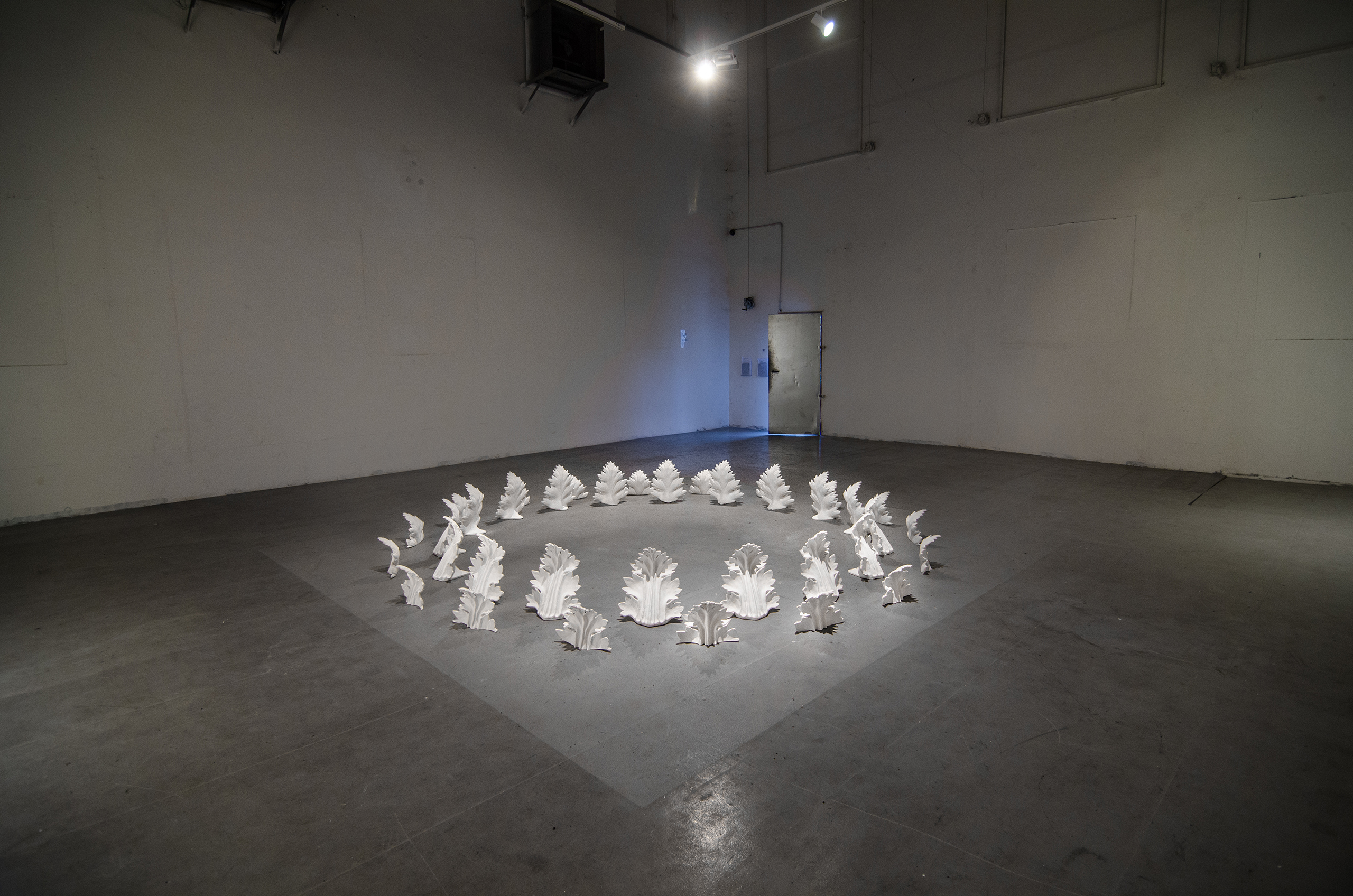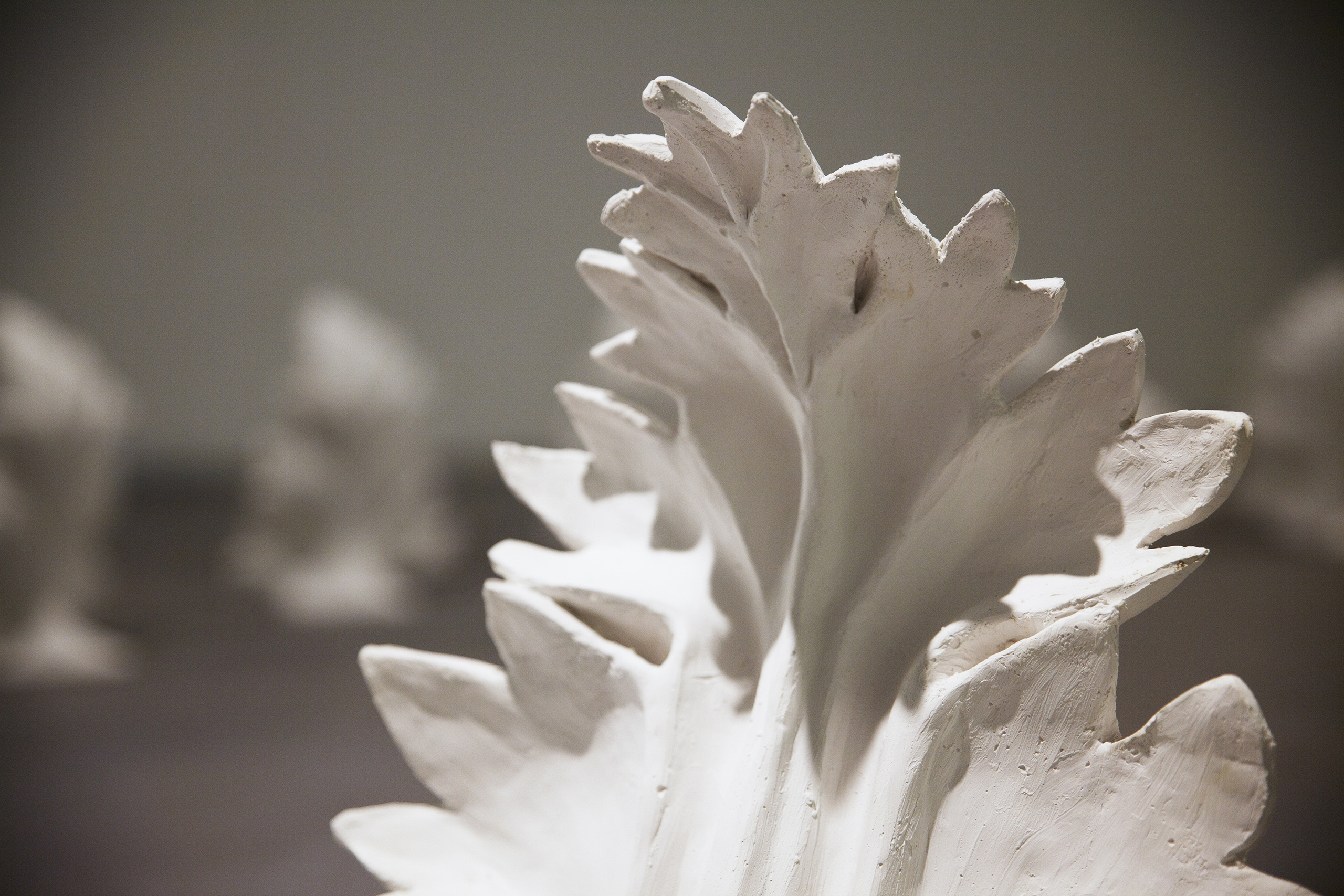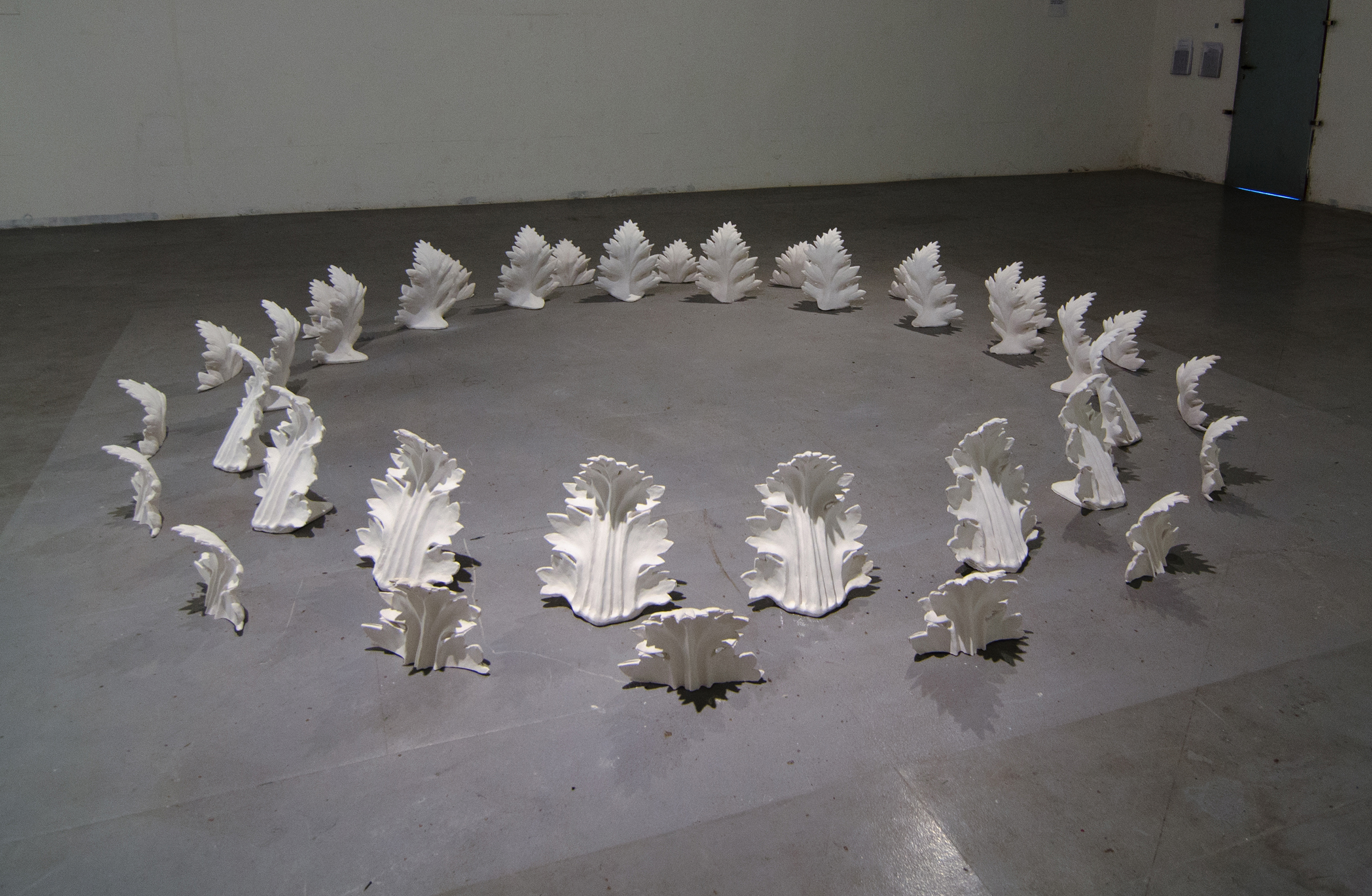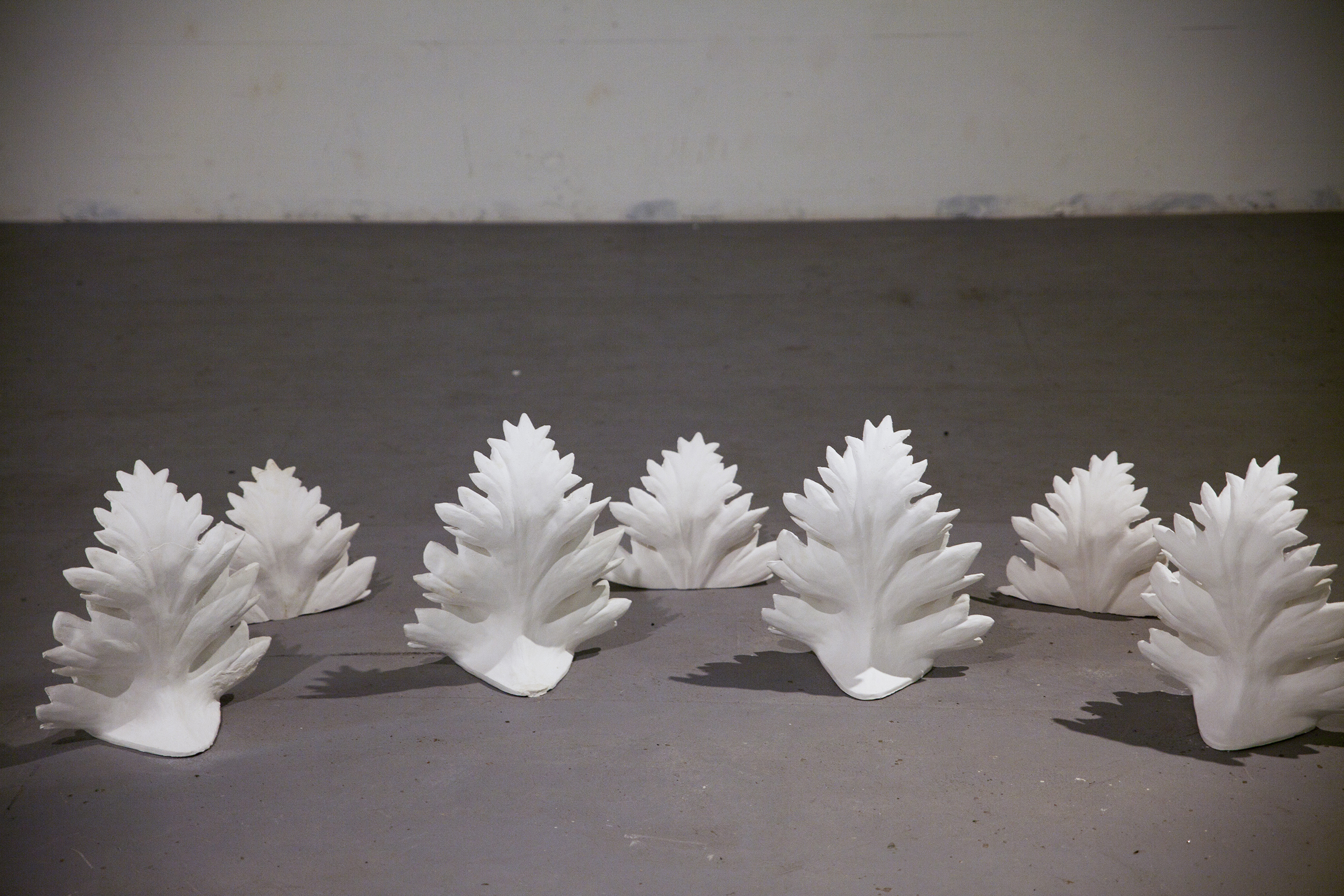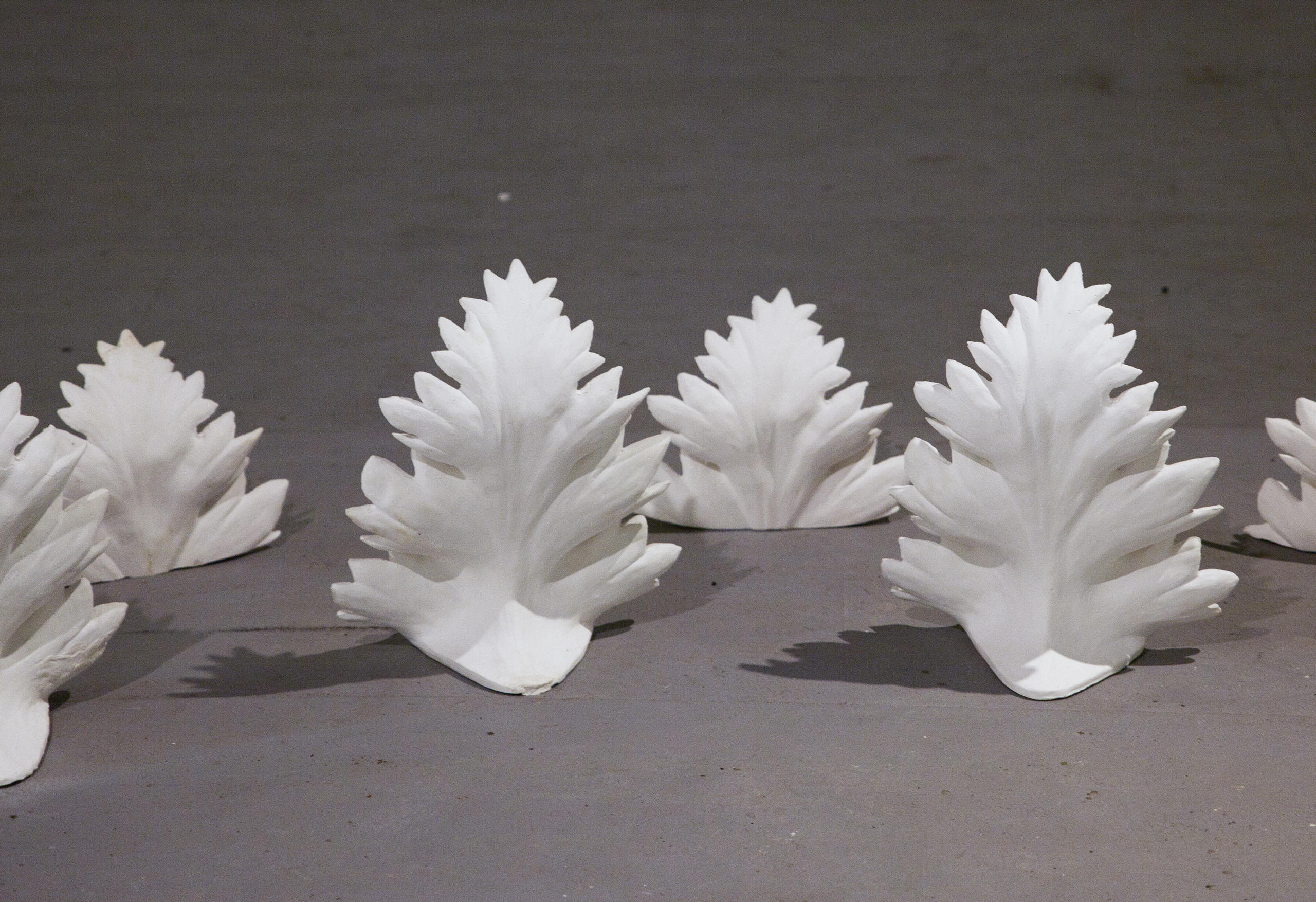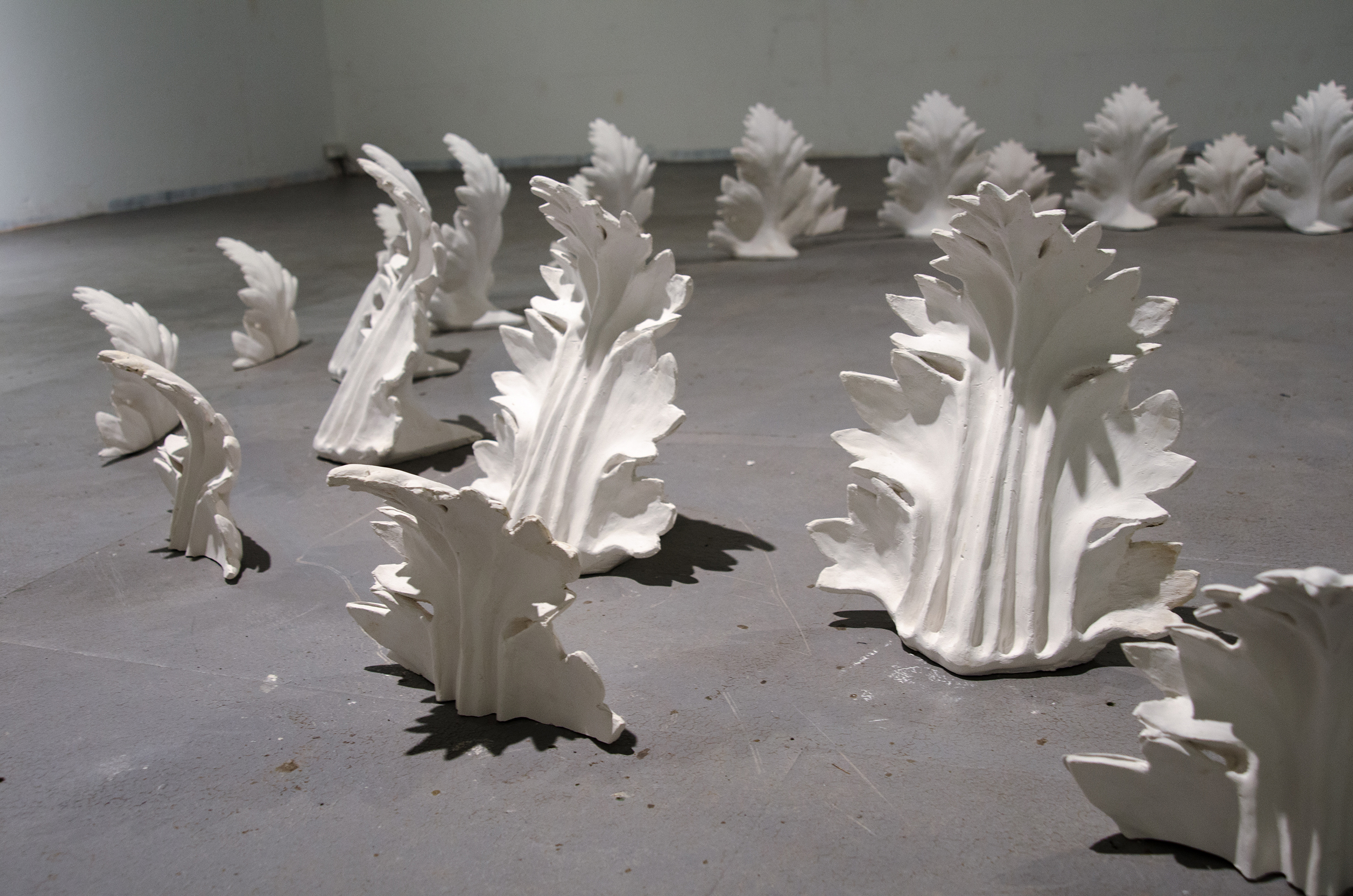Bouche
plâtre
45 × 350 × 350 cm (approx)
2015
À propos de Bouche
“We have outgrown ornament: we have fought our way through to freedom from ornament,” the purist architect Adolf Loos wrote in the late 1920s. “Invention of new ornaments is unable to pleasure a cultural man.” But unlike Loos, the ornament doesn’t bother Axel Gouala. You could even say it brings him so much pleasure, that he is engaged with it throughout his oeuvre.
Gouala understands ornament mainly as a fragment of a whole: a neglected detail of a Baroque sculpture, plunged down under layers of more significant elements; acanthus leaves made unimportant by the monumentality of a Corinthian column; a single wave among thousands of other similar ones amidst a stormy sea or a mountain towering over the empty horizon. Gouala notices the neglected ornament, emancipates it, passing on from ornaments in the natural world to the ones in the world of art. He gives them space, lets them talk and vacates the scene for them. He gains independence for the ornament, saying: you yourself can be a sculpture if you dare! And thus, less than a hundred years after the opening words of this text were spoken, instead of yearning for the destruction of ornament, Gouala is longing for its rebirth: “Nature creates random shapes, but some of them are special, worthy of representation. Animals, plants and elements remind us of something from our distant past, something that deeply and in a primitive way connects with the ground, and that fascinates me.”
Loos considered ornament to be obsolete and was refusing to look into the past. He was trying to find accurate morphology of shapes actual for the time being. Gouala, perhaps in opposition to him, goes back down into history of the ornament, searching, remodeling, making it visible. “The man of today uses or discards ornaments of old or exotic cultures as he sees fit. He concentrates his ingenuity and ability for higher things”, says Loos, and I think that they might understand each other in some ways.
Suzana Jakalová

